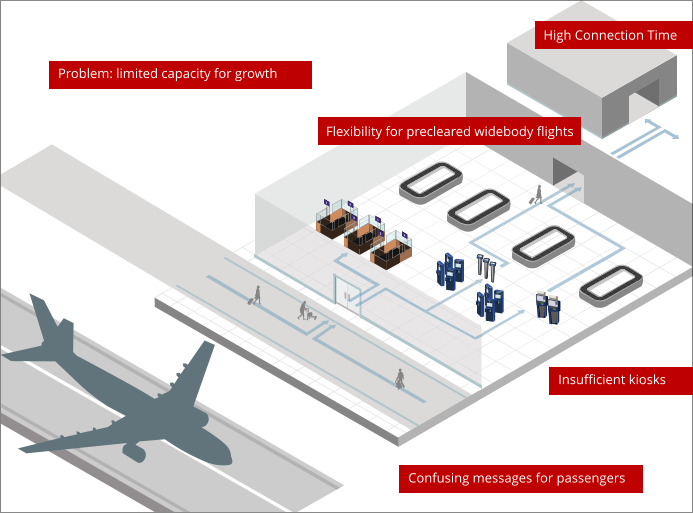

© National Safe Skies Alliance - Authored by InterVISTAS Consulting



CBP Airport Technical Design Standard

Key Findings
This guide provides recommendations based on key findings that were collected through airport questionnaires, site surveys, industry documents, and working groups.Facility Enhancements for Key FIS Processes
Click on any of the following areas to be able to access information about future design considerations to ensure growth and processes can be accommodated
Overall Findings from the ATDS
There are also six additional findings with general processing principles that can be applied to all areas
6. Improve egress from CBP
7. Global Entry/Connections
8. Rescreening elimination
9. Flexible FIS space
10. Growth triggers
11. Reduce baseline requirements
Smaller FIS Facilities
A 12th finding involves the flexibility needed for smaller FIS facilities, particularly those that can leverage existing resources for corporate aviation facilities. Click here for more information. Building a “Right-of-Way” for Future Facilities Note that the findings are not recommendations for implementation. Some findings can be immediately acted upon, but most will require a business case tailored to the individual facility. The findings for facility design are meant to help airport planners think ahead to the evolution of facilities. As a result, the illustrations are analogous to a “right-of-way” in highway planning – creating the space or facilities to allow easy implementation of future pathways, or options for international arrivals or preclearance processing.

© National Safe Skies Alliance
Authored by InterVISTAS Consulting

CBP Airport Technical Design Standard






































